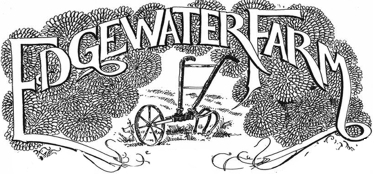This, by my reckoning, is mid winter. From my chronological frame of reference, this is what we of
60 years of age (or more ) refer to as an “old school” winter. January has been fairly dry and
seasonably cold, although February seems to be steering towards a wetter pattern. Ski areas have
been supplementing the snow base with man made snow, and my grand kids are having perhaps
their best skiing conditions of their short lives.
In the greenhouse, things are limping along as they do with short, cold days, but each afternoon I
find more twilight when I head down the hill to the house for evening. Days are getting longer. And I
know the time approaches when the days get busier and longer. For now, I like the leisurely pace of
making dinner and sitting in the comfort of the kitchen woodstove.
As I look into the ever cloudy crystal ball there is an unsettling feeling about the up coming growing
season. There has been a great upheaval in Washington with the recent presidential election.
Massive changes in government structuring, foreign policy, defense.... Almost no governmental
arm has been left untouched. This includes agriculture. Because so many of my friends are so
passionately engaged in heated political dialogue, I have chosen not to engage them in areas of
disagreement. Furthermore I am not that confident of my opinions. But recently the administration
has enacted some policy that I know something about, and I feel qualified to bring it up because it
affects us all, both here on our farm and beyond. .
For whatever stated purpose, it looks as if its proposed that we will now have tariffs on incoming
goods and services from Canada and China. There is not much that comes from Mexico that I know
of that we utilize here on the farm. Perhaps there will be additional costs to new Toyota pickups or
Kubota tractors, I am not sure. But we depend pretty heavily-as does all northeastern agriculture-
on supplies from our Canadian neighbors. We have a large contract with a local propane company
-as do all local propane companies- that sources most of its propane from Canada. We have been
told that in the event of tariffs there will be no contracts issued or honored when the current
contracts expire. The cost of heating our greenhouse will likely double, adding tens of thousands of
dollars to the production of vegetables and ornamentals.
Peat moss used in greenhouse production comes from the eastern Canadian provinces. Without
the tariffs there have been shortages and lack of availability the last two years. This is perhaps more
concerning to us here as we are not sure what we would use in place of peat moss should the
supply dry up. What we do know is that it will be more expensive, whatever the solution. It is not as
easy as just blending some sand with cow manure and wood chips or digging soil out of the field to
plant your cabbage plants and hanging baskets in.
We get our strawberry plants from a family in Nova Scotia. They are of exceptional quality and
are varieties that are specifically chosen for growing in this area. Will we be able to still get them?
How much more difficult will it be? Again, whatever the answer, it will be more expensive.
China is a huge player in the fertilizer market...what is the outcome of that? Maybe not more
expensive, but most likely questions of availability and cost associated with trade upheavals.
All our labor here at the farm are legal workers contracted through the federal H2A DOL programs
initiated in 1942 between the Jamaican and American governments. But should ICE start yanking
unpapered laborers out of the central valley or California and dairy farms in the northeast therewill be production costs to those farmers, and perhaps related food shortages and widespread food
price escalation.
These enumerated issues are of concern to us. Fortunately here at the farm we have most of our
greenhouse inputs inventoried so we can hit the ground running with everything at hand. Fertilizer is
pre bought, but it’s not on site.
So the 2025 growing season will be challenging and mostly because of the uncertainty associated
with government policy. (And the potential for extreme weathe fluctuations) I fully expect that there
will be resultant elevated consumer costs at the grocery store, despite the presidents promise to
lower food prices. We will follow it as best we can, and after we have a year of experience with the
changes in governmental policy we may have to tweak our farm model. Or not.
Every year is different on a farm. This one promises to be really interesting.

